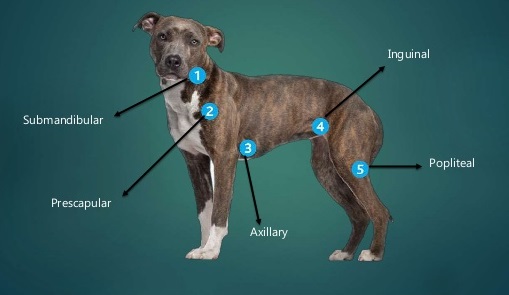
Cut-off values were determined using receiver operator curves, 0.68 RI and 1.49 PI. Cancer that sits in the lymph nodes in dogs is referred to as Lymphoma. One of the most common reason is your dog has a viral or bacterial infection and, as they try to fight this. The most easily located lymph nodes on a dogs body are the mandibular lymph nodes (under the jaw) and the popliteal lymph nodes (behind the knee). There was a significant difference in resistive index (RI) and PI between benign and malignant nodes. What Can Cause Your Dog’s Lymph Nodes to Swell Infections. This was improved to 11% if the nodes were divided into two groups: benign and malignant. However, in the available veterinary literature, ruptured lymph nodes are not described as a cause of haemoabdomen. The size of the lymph node, distribution of vascular flow within the lymph node, and pulsatility index (PI) in combination gave a classification error of 23% for the four groups of lymph nodes. Multivariate statistics using discriminant analysis was used to determine which parameters can be used to predict the diagnosis of the lymph node. Abnormalities and swelling of the lymph node can result in symptoms that will alert you to the fact that there is an ongoing disease present. In the case of lymphadenitis, the cause is typically of a benign nature, though malignant forms are documented as well.

Size, echogenicity, nodal border definition, presence of a nodal hilus, acoustic enhancement and distribution of vascular flow, as well as perfusion indices were measured. Enlarged lymph nodes are generally a sign of infection. Three hundred and eighteen superficial lymph nodes in 142 dogs were studied by B-mode, color flow mapping, power, and spectral Doppler ultrasonography.

The objective of this study was to characterize the ultrasonographic patterns of normal superficial lymph nodes and to evaluate whether ultrasonography can help discriminate between different lymphadenopathies (reactive, lymphoma, and metastases) in dogs.



 0 kommentar(er)
0 kommentar(er)
